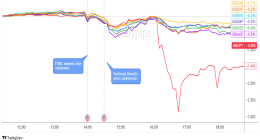
June 22, 2021 5 min read
Opinions expressed by Entrepreneur contributors are their own.
It used to be that a musician was either limited to booking gigs at small local venues or among the lucky few to get signed to a major label and start filling bigger clubs and arenas. But in recent years, streaming services and social media have practically evened the playing field. I’ve personally seen this bear out, as there has been a tremendous upswing in incoming requests coming to my PR agency for publicity and marketing services from emerging artists and indie labels.
And since I need to stay current and understand what goes on behind the scenes to provide the best service possible for our clients, I decided to reach out to Cody Colacino and Bugz Ronin, two respected industry veterans, to get the inside scoop. Colacino is known for his production and development work with Universal Music Group. Hs credits extend to Lil Xan, Lil Keed, Ski Mask the Slump God, Trippie Redd, and Tyla Yaweh. Ronin has produced Lil Uzi Vert’s double-platinum album Eternal Atake, among other notable collaborations.
Colacino and Ronin made a name for themselves by taking relatively unknown artists, crafting their sound, creating their brand and securing major-label deals. But it never felt right to them that upon signing with a major, the artist had to give away their masters, essentially losing control of the recordings’ financial gains (see: Taylor Swift’s very public battle with Scooter Braun).
Motivated to create a different path for emerging artists, Colacino and Ronin used the advances they received from those major-label deals to launch their own imprint, Pure Sinners Ent. They’ve since signed their first artist, Bad Neighbors, and plan to follow the same blueprint for success as they have in the past.
Related: Kara DioGuardi Knows How Songwriters and the Music Industry Can Survive
I recently visited the Pure Sinners headquarters, a beautiful hillside mansion in Los Angeles where artists can come and record. Colacino greeted me before getting back to “cooking up,” or making music in the studio. I looked on as he crafted a beat from scratch, switching from his guitar to the keyboard while making adjustments to the audio files on his computer. Then the magic happened: Colacino began recording the artist singing over the beat he had just made while engineering the sound as she sang. The entire process took roughly 90 minutes.
“We’re producers and engineers first and foremost,” explains Colacino. “We truly are in the studio with our artists day and night sculpting the sound. Our time off from the studio is spent growing our business and running the label. It’s rare to see a label produce, record, mix, master, brand, market, distribute and fund their artists. Usually, all of those roles are split up amongst multiple teams for just one artist.”
According to Colacino, there are three primary areas to focus on when launching a new artist.
Develop a catalog of music
“By developing a catalog of music, you can ensure there is consistent sound and direction,” Colacino says. “Once you have a couple of hundred songs, you can then start narrowing them down to which ones should be released in a specific order.”
Though as Colacino would attest, be warned: Developing a catalog of music isn’t cheap. Studio time, production and mastering can run several thousands of dollars for each song. It’s essential to build solid relationships with producers and sound engineers to ensure your investment is well spent.
Build a brand that’s in sync with the music
“Build a brand that visually complements the sound of the music,” says Colacino. “Be sure all of your content is consistent and has a tone that matches the music, from videos and photos to logos and merchandise. Your brand should have the same look and feel across all platforms.”
Part and parcel with Colacino’s advice, I always suggest creating a mood board with visual representations of the look and feel artists want for their brand. Once the brand has been defined, you can create brand guidelines that have all your colors, fonts, logos and do’s and don’ts for others working on your brand to reference.
Market and expose your artist
“After your music and brand are solid, you need to work on marketing and exposing your artists to the proper demographics that will resonate with their music,” Colacino suggests. “Pitch your artist to the media, industry blogs, music podcasts, etc.”
In my own experience, I can confirm that getting your artist’s music on playlists is a great way to tap into a new consumer base. Develop relationships with playlist curators early on and share music with them that you know will resonate with their audience. Many playlist curators have their social media connected, but if not, you can simply search them and message directly.
Related: If the Black Crowes Adapted to Ecommerce During the Pandemic, So Can You
Whether you’re an artist, producer, label owner or manager, there’s no doubt that choosing to be in the music business is a labor of love. There are never any guarantees, and you could pour your heart, soul and bank account into putting out music and see very little financial return, if any at all. However, if you’re passionate about what you do and strive to be the absolute best, it’s an incredibly lucrative and fulfilling industry.
This article is from Entrepreneur.com








